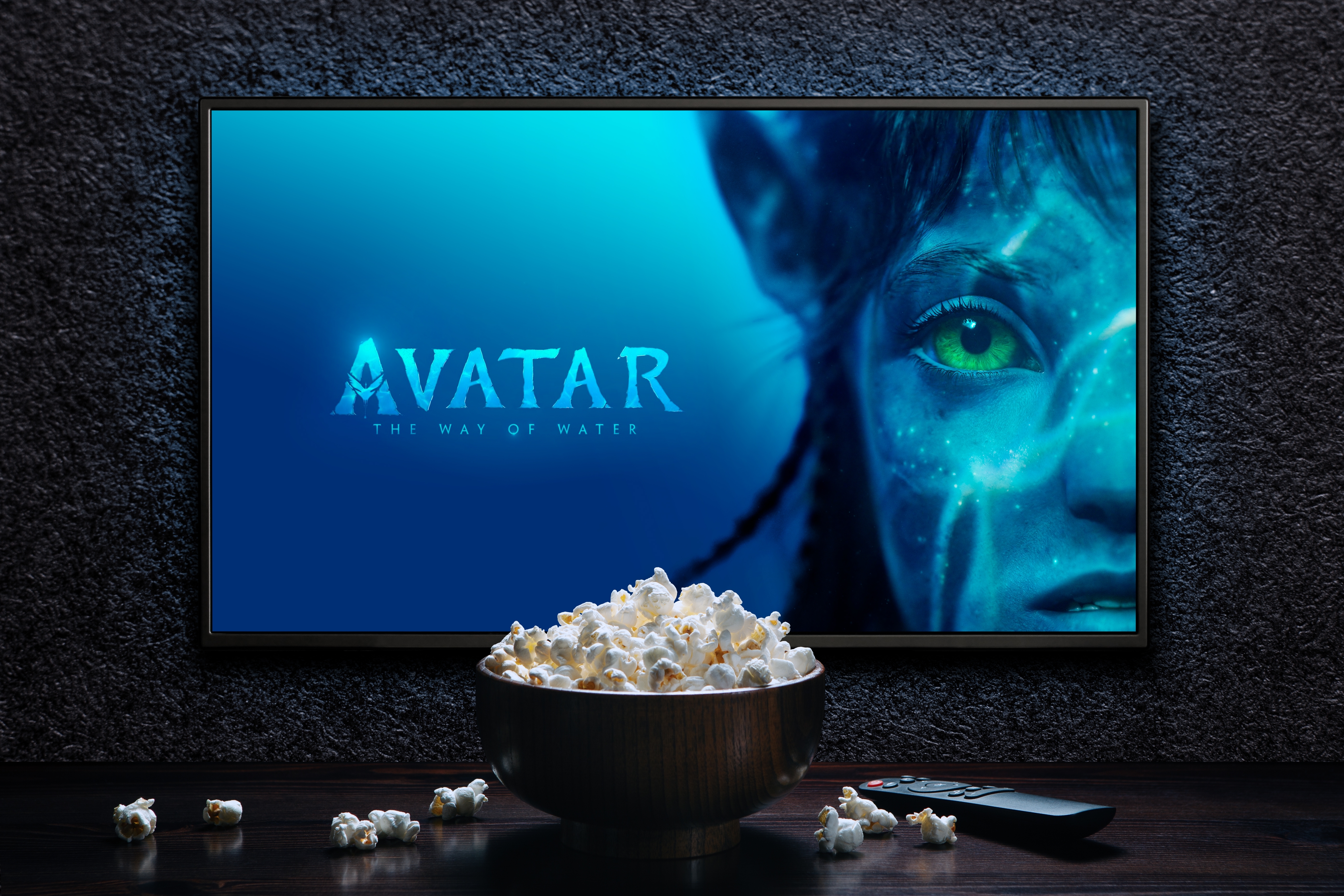Why Avatar 2's unique high frame rate is the future of cinema (unless it’s not)
High-frame-rate cinema finally done right

James Cameron’s Avatar: The Way of Water (aka, Avatar 2) had its long-awaited – 13 years to be precise – theatrical premiere on December 16, with fans of the first Avatar and new fans alike filling cinemas worldwide to take in the spectacle.
And what a spectacle it is. Shot in 3D, like the original, and presented in a high-frame-rate (HFR) format, Avatar: The Way of Water pushes the boundaries of filmmaking technology in a way only a director like Cameron can. It brilliantly succeeds in immersing viewers in an alien world, one so richly detailed that it’s easy to suspend disbelief and merge with it.
While it was a thrill to kick back in an IMAX theater and re-enter Pandora again after such a long hiatus (and to watch a movie properly captured in 3D, a format that, from a quality standpoint, took a dive off a cliff in the intervening years since the first Avatar came out), I was equally interested in checking out the film’s use of TrueCut Motion, an HFR technology developed by California-based firm Pixelworks that had recently been used to re-master Avatar (2009) and Titanic (1997) for theatrical re-release.
The last time HFR made a splash in cinemas was with the release of Peter Jackson’s The Hobbit: An Unexpected Journey (2012), which was shot in 48fps. That’s also how the film was first projected in theaters, though the poor reception that the high-frame-rate The Hobbit received resulted in it being re-mastered in standard 24fps format, which is how most venues ended up screening it.
Having caught an original The Hobbit HFR screening, I understand why viewers strongly disliked its look – the motion appeared overly smooth and soap opera-like, with none of the 'filmic' quality characteristic of standard 24fps movies. One thing that couldn’t be denied, though, is the clarity HFR brought to The Hobbit’s many fast-moving action scenes, something that allowed for the full detail in Jackson’s elaborate visuals to be appreciated.
Motion grading: a new movie-making tool
Pixelworks’ TrueCut Motion, according to a company release, “allows filmmakers to dial in the motion, with any source frame rate, shot by shot, in post-production.” As a post-production tool, it provides what Pixelworks calls “motion grading” capability, with controls to not just vary frame rates, but to variably adjust the judder and blur angle in images.
In a briefing on the tech with Richard Miller, EVP of Technology & GM of TrueCut, and Aaron Dew, Senior Director of Ecosystem Marketing, Pixelworks, it was explained that TrueCut Motion gave James Cameron the ability to switch between a standard 24fps look for Avatar: The Way of Water’s more dialogue-laden terrestrial scenes, and a customized smooth look in the underwater ones. Furthermore, the technology helped to improve the look of the film’s special effects, along with high dynamic range and 3D image depth.
Having previously caught a demo for which scenes from The Hobbit were re-mastered using TrueCut Motion, I was aware of its ability to reduce judder and improve motion resolution in movie action scenes. But watching Avatar: The Way of Water, a film with a three-hour-plus runtime, in a theater would be a true test of what it was capable of.
Instead of HFR imparting a hyper-real, almost sick-making clarity on the big screen in the way The Hobbit did back in 2012, Avatar: The Way of Water’s variable frame rates were applied seamlessly. There was one scene in a lab where Parker Selfridge (Giovanni Ribisi) makes a brief reappearance that had an overly fluid quality, but that was the one time during the screening where I experienced a sense of queasiness (and it might have been deliberate on the director’s part given Selfridge’s corporate-villain character).
Basically, James Cameron’s second entry in the Avatar series is a visual triumph, and a notable improvement on the original. I’m not sure many filmmakers have the resources – and patience – to repeat what Cameron has achieved with The Way of Water, but the template now exists, and it should be used.

Will TVs get TrueCut Motion?
When I caught my initial TrueCut Motion demo, it was conducted using a TCL TV at CES 2022. Seeing this happen on a regular TV in the company’s booth made me hopeful that it would appear in new sets the company planned to release later in 2022, but that didn’t come to pass.
According to Pixelworks’ Aaron Dew, current TVs are ready to support TrueCut Motion – no special hardware is required. But they do need to be certified by Pixelworks, in a manner similar to THX certification or, to make a more general analogy, Filmmaker mode on TVs.
Perhaps we’ll see TrueCut Motion-certified TVs announced at the upcoming CES 2023, from TCL and possibly other brands. With Avatar: The Way of Water now screening worldwide and getting a good reception (82% on Rotten Tomatoes – not too shabby) the new HFR motion grading technology is having its moment in the sun. All it now needs is for more movie makers to embrace it, and for the video streaming ecosystem and display manufacturers to incorporate it so viewers can enjoy films like Avatar: The Way of Water produced in HFR that way at home.
Get daily insight, inspiration and deals in your inbox
Sign up for breaking news, reviews, opinion, top tech deals, and more.

Al Griffin has been writing about and reviewing A/V tech since the days LaserDiscs roamed the earth, and was previously the editor of Sound & Vision magazine.
When not reviewing the latest and greatest gear or watching movies at home, he can usually be found out and about on a bike.